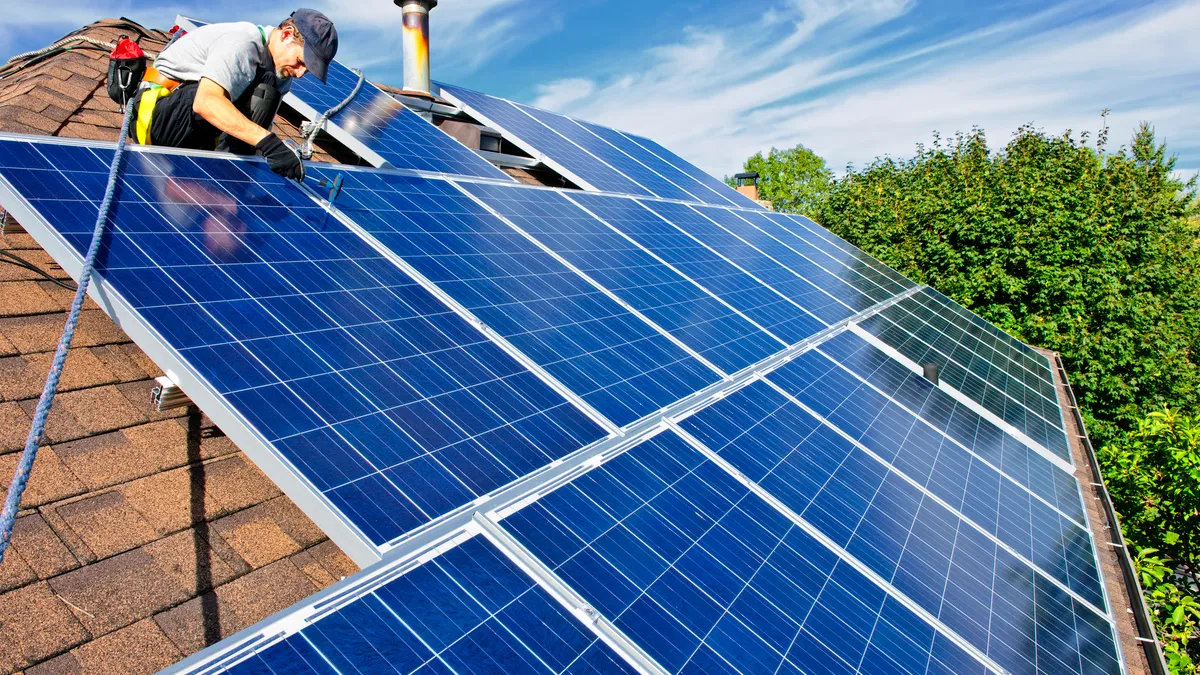Dive Brief:
-
The U.S. solar industry installed 6.1 GWdc of new capacity in the first quarter of 2023, setting a record for the traditionally slower first quarter. Installations were 19% lower than the fourth quarter of 2022, according to the quarterly U.S. Solar Market Insight by the Solar Energy Industries Association and Wood Mackenzie.
-
Supply chain constraints remain a concern, but seem to be easing, allowing solar installers to work through their backlogs of delayed projects, Wood Mackenzie principal analyst Zoë Gaston said.
-
While the overall trajectory for solar is positive, analysts expect the industry could experience some ongoing volatility in the years to come.
Dive Insight:
The renewable enregy industry recently marked another milestone—utility scale wind and solar generated more electricity than coal during the first five months of 2023, according to the Institute for Energy Economics and Financial Analysis.
IEEFA energy analyst Dennis Wamsted agreed with Gaston that progress on the supply chain front has accelerated installations in recent months. More solar panels have been making their way through U.S. customs as solar suppliers get their documentation up to date, Gaston said, and utility scale projects in particular have begun to recover quickly.
Even so, supply chains could remain a pinch point for the industry for some time, Wamsted said. While the Inflation Reduction Act has brought hope that domestic manufacturing will expand to meet demand for solar, demand has also increased. If you double manufacturing capacity at the same time you double demand, he noted, you end up in the same place that you started.
“We might see a slow down in supply just because we are growing so fast, but I am very optimistic about the trend,” he said.
Panel shortages are likely to hit smaller installers harder, Wamsted said—and there is evidence of this in the Wood Mackenzie data. Community solar was the only segment of the industry that did not post improved year-over-year numbers, with installations down 13%.
“The NextEras of the world can get as much product as they want to install facilities, while the smaller folks who don’t have access to material have to wait their turn,” Wamsted said. “But even that in my view of what I read and hear is starting to ease.”
Meanwhile, rooftop solar, with installations of 1.6 GWdc in the first quarter, could be headed for some additional headwinds, Gaston said. The segment’s largest market, California, has seen sales slow in the wake of new net metering regulations and individual rooftop companies can have very different perspectives on the future depending on their situation relative to the IRA.
Conventional installers who sell panels to homeowners won’t be able to take advantage of many of the new incentives created by the law. Companies with third-party product offerings—the option for customers to lease solar panels installed on their own roof—stand to reap much greater benefits from the IRA, Gaston said.
Based on sales data, the residential solar market may experience a slight contraction through 2024, she said.
The current state of flux has triggered a variety of disparate forecasts for the solar industry’s immediate future, Gaston said. But she and Wamsted agreed the long-term outlook is rapid growth.
“I think things are going to be chaotic, but to me that is a good chaotic,” Wamsted said. “I’m thinking it’s a strong wind pushing people forward. Maybe that feels out of control, but it’s a good out-of-control, not a bad out-of-control.”














